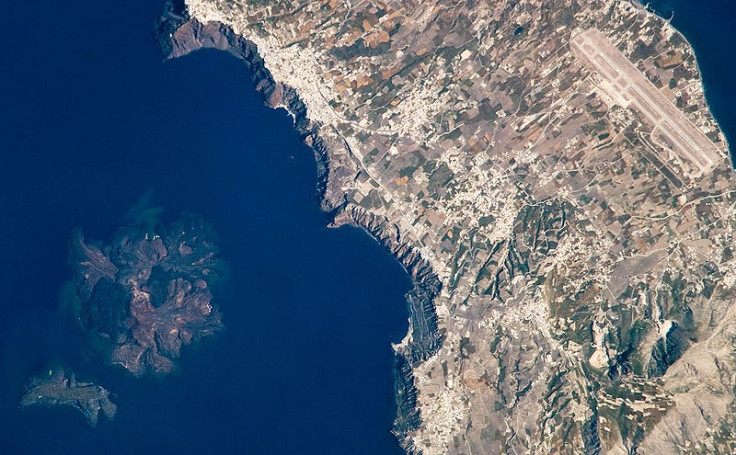Greek Island Santorini Sitting on Huge Inflating Volcanic Magma Ball

Santorini, the Greek island which receives thousands of tourists every summer, is sitting on a giant 'balloon of magma' which continues to inflate, according to a new study.
Geologists led by Oxford University discovered that the chamber of molten rock, which has been resting peacefully for the last 60 years beneath the volcanic island, has expanded from 10 to 20 million cubic metres between January 2011 to April 2012, and is now 15 times the size of London's Olympic Stadium.
The expansion has forced the island upwards by 14cm (5.5in) and caused several small earthquakes, sparking fears among the local population of a possible eruption.
The movements were detected by an expedition led by Michelle Parks, an Oxford University DPhil student, and funded by the UK's Natural Environment Research Council.
Using satellite radar images and GPS the researchers, were able to measure the exact scale of the on-going seismic activity.
Most of Santorini's 10,000 inhabitants had already noticed something was going on beneath their foot.
Parks said: "During my field visits to Santorini in 2011, it became apparent that many of the locals were aware of a change in the behaviour of their volcano.
"The tour guides, who visit the volcano several times a day, would update me on changes in the amount of strong smelling gas being released from the summit, or changes in the colour of the water in some of the bays around the islands.
"On one particular day in April 2011, two guides told me they had felt an earthquake while they were on the volcano and that the motion of the ground had actually made them jump. Locals working in restaurants on the main island of Thera became aware of the increase in earthquake activity due to the vibration and clinking of glasses in their bars."
Santorini's volcano last erupted in 1950, while the last seismic activity was recorded in the archipelago 25 years ago.

Santorini is the largest of a small, circular group of islands in the southern Aegean Sea, about 200km (126 miles) south east of the Greek mainland.
Its volcano was the site of one of the largest eruptions ever recorded in history, when the island was buried under several metres of pumice by the so-called Minoan eruption 3600 years ago.
The eruption was so big that historians believe it could have led to the collapse of the ancient Minoan civilization on the island of Crete, 110km (68 miles) south of Santorini which was hit by a massive tsunami.
Another theory suggests the eruption led to the myth of the sunken island of Atlantis.
However scientists said that the recent movements do not mean an eruption is about to happen - in fact the rate of earthquake activity has dropped off in the past few months.
© Copyright IBTimes 2025. All rights reserved.






















